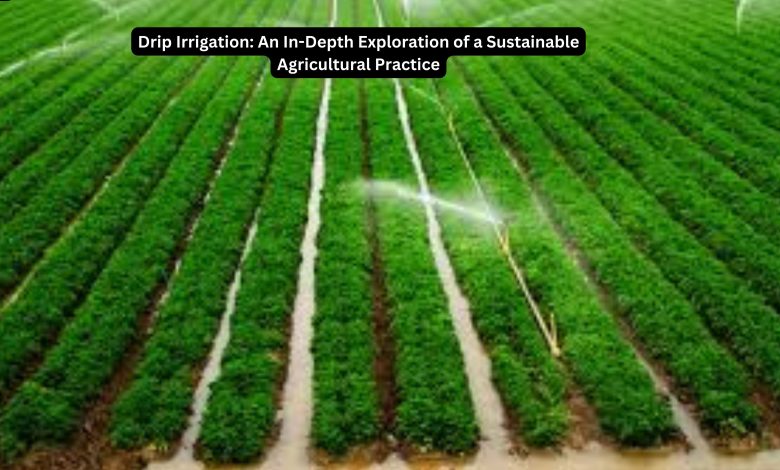Drip Irrigation: An In-Depth Exploration of a Sustainable Agricultural Practice

Drip irrigation
Drip irrigation is one of the agricultural irrigation systems and is an effective irrigation method used to provide nutrients directly to plants with water. In this method, it is aimed to provide water to the plants in small drops, under low pressure and regularly. This irrigation system provides plants with more efficient access to water and nutrients while minimizing waste of fertilizer and water. It also allows saving water by reducing water evaporation on the soil surface. Drip irrigation is used especially in arid and semi-arid regions, in places where water is limited and in areas with irregular rainfall.
How to Install a Drip Irrigation System?
1. In the first step, the area to be irrigated should be examined in detail and irrigation needs should be determined. The system is designed by taking into consideration factors such as plant species, soil structure, slope, water source and irrigation program.
2. A suitable water source should be determined for the drip irrigation system. This source; It can be well water, mains water, pond or rainwater collection system.
3. Materials such as pipes, filters, droppers, fittings and control valves to be used for the irrigation line are selected. The quality and compatibility of these materials are very important for the durability and efficiency of the system.
4. Laying of the irrigation line begins in line with the determined design. Pipes are placed neatly next to or between the rows of plants.
5. Droppers are mounted on the pipes at regular intervals. Water flow rates and intervals should be carefully adjusted so that the droppers can provide equal amounts of water to the plants.
6. The filters to be used in the system ensure the cleaning of particles and sediments in the water. However, control valves and timers are also integrated into the system to manage the irrigation schedule.
7. After the final installation process is completed, it will be very important to test the system and make the necessary settings. Factors such as water flow rate, dropper performance and pressure levels are checked to ensure that the system works efficiently.
How Much Water Does Drip Irrigation Consume?
How much water the drip irrigation system will consume depends on many factors and it is very difficult to give a single and clear answer. However, in general, the drip irrigation system is a more water-efficient option than other irrigation methods. Some factors that affect the water use of a drip irrigation system are:
• Different plant species have different watering needs. For example; Fruit trees or vegetables need more water, while shrubs or grasses may need less water.
• Climatic factors such as temperature, wind and humidity affect the water use of the drip irrigation system. In hot, dry climates, plants may need more water, while in humid climates, less water may be needed.
• Soil drainage, water absorption and retention capacity affect the water consumption of the drip irrigation system. Soils that provide better drainage can allow water to penetrate plants better.
• The water source used in the drip irrigation system also affects water consumption. The system can be fed from different sources such as mains water, pond, well water or rain water.
Click for detailed information about Drip Irrigation systems! https://www.serdrip.com/en/drip-irrigation



